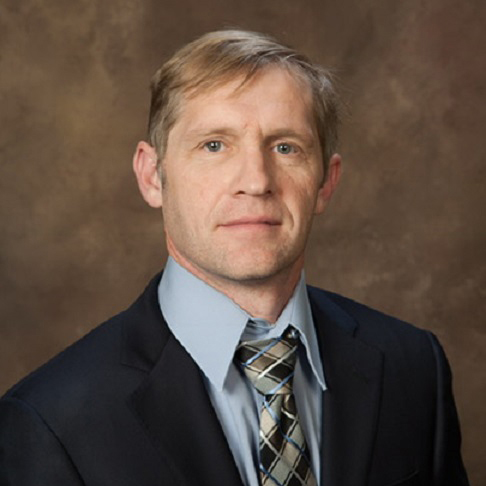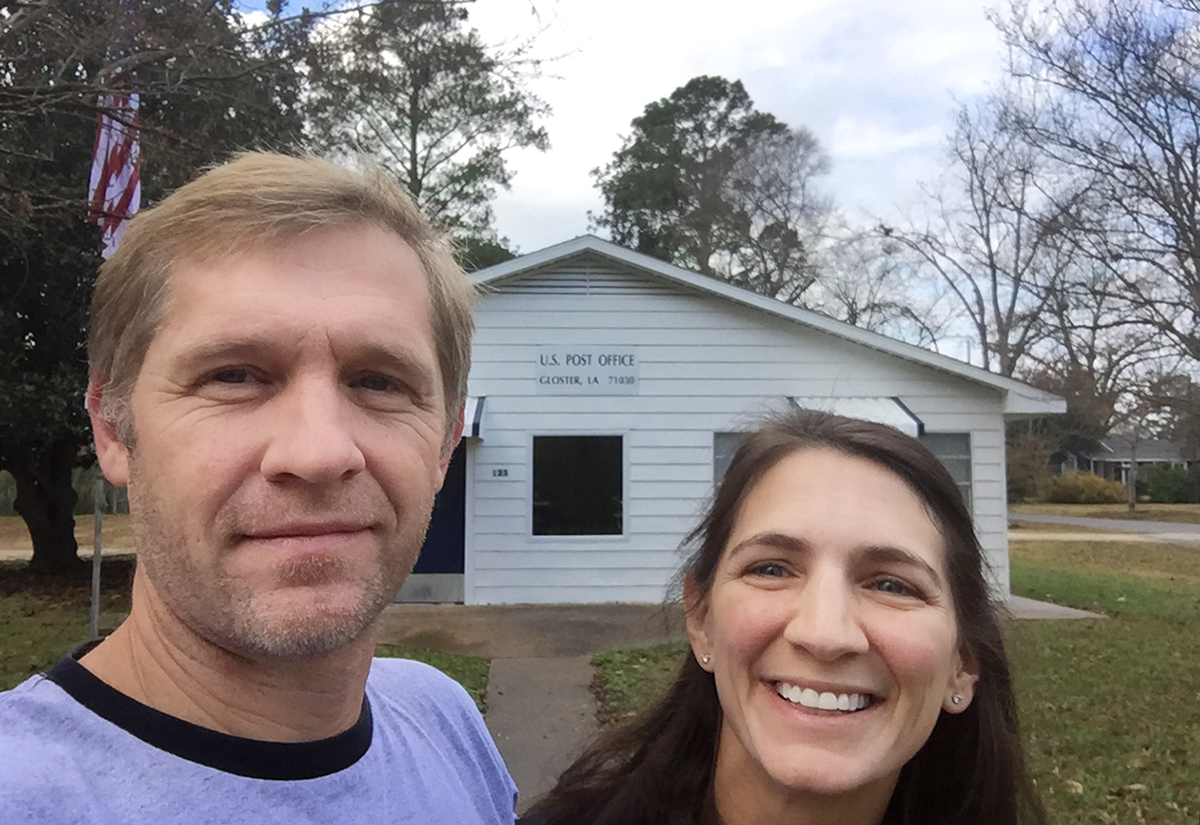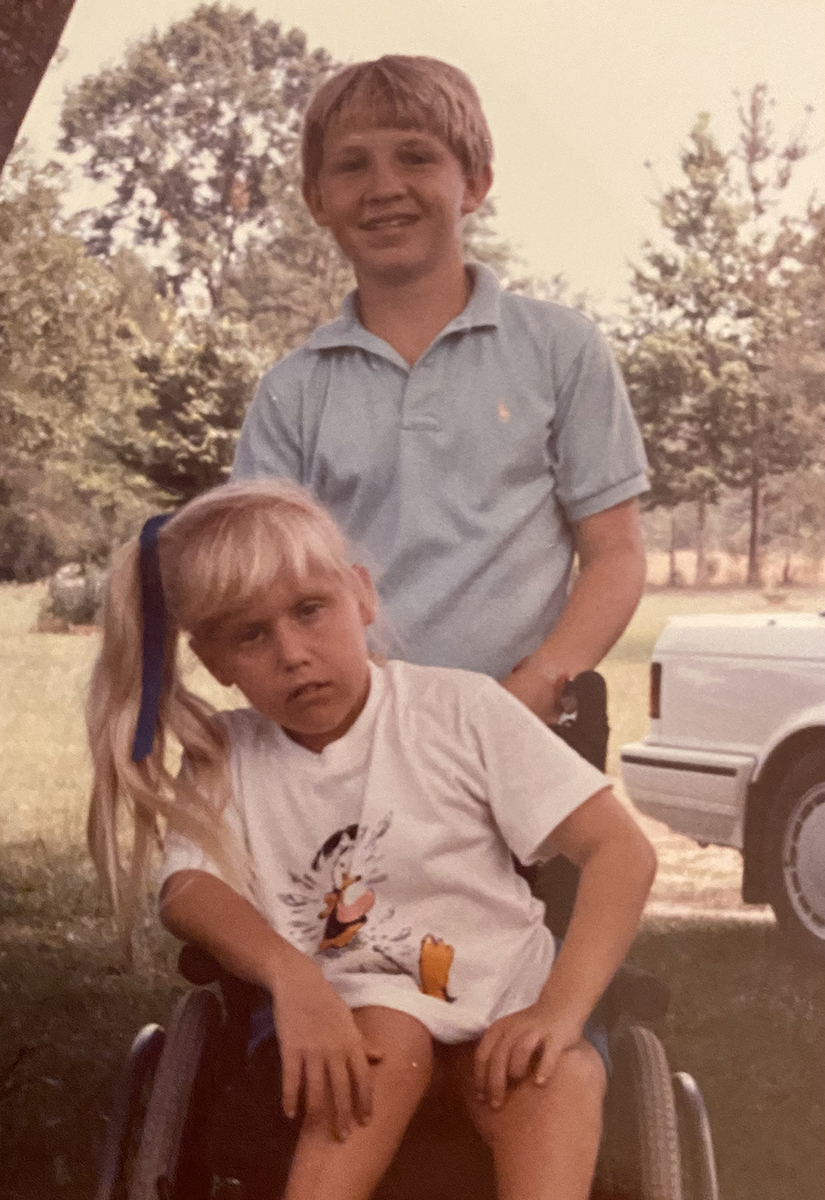New Colors, Same Stripes: Dr. Hollis “Bud” O’Neal
January 18, 2022
From LSU purple and gold to Our Lady of the Lake blue.

Dr. Hollis “Bud” O’Neal.
– Our Lady of the Lake
Dr. Hollis “Bud” O’Neal is the medical director of research at Our Lady of the Lake Regional Medical Center in Baton Rouge and an LSU Health New Orleans alumnus. He is one-half of a Louisiana power couple in medicine—his wife Dr. Catherine O’Neal (another LSU Health New Orleans alum) serves as Chief Medical Officer, also at Our Lady of the Lake. Together, they’re helping to steer the state through the COVID-19 pandemic, while Dr. Bud O'Neal also is developing new medical technologies to diagnose sepsis, a life-threatening condition that occurs when the body’s response to an infection inadvertently causes widespread inflammation and organ damage. More than 1.7 million Americans get sepsis each year, and about 270,000 die. Dr. Bud O’Neal describes sepsis as “an enormous problem” in health care. Every third patient who ends up dying in a hospital has sepsis, and hospitals spend a lot of money trying to prevent it.
How did you become a medical doctor?
I’m originally from DeRidder, Louisiana. It’s a small town in western Louisiana near the Texas border. I wanted to be a doctor, but was also very interested in technology.
“ AI chose LSU Health New Orleans for medical school because Louisiana is home. My intent was always to live in Louisiana. In fact, at some point, I wanted to go back to my hometown of DeRidder to practice medicine. ”
In medical school, I met the person who would become my wife. We both did our residency training at LSU in Baton Rouge, at the Earl K. Long Medical Center [which provided emergency care to several state parishes before closing in 2013] and got married. She grew up in Mamou, another Louisiana small town.
She wanted to do infectious diseases, while I decided to do pulmonary critical care. I love the physiology of the ICU, which takes care of very sick patients. It always felt to me like the ICU is a bit of a physiology lab because you can do something and get almost immediate results—you know right away if you’re going in the right direction or not.
We ended up going up to Vanderbilt for part of our training, but both knew we wanted to come back here and be near our families and help improve health care and medical education in Louisiana. Eventually, I abandoned all of the ideas I originally had of being a doctor in DeRidder, mostly because you can’t really practice specialty medicine in a small town. There isn’t enough population—you end up doing everything. My goal at Vanderbilt was to bring knowledge back to Louisiana and develop something in Baton Rouge that we didn’t have at the time, which was a large, clinical trials-type program.
What shaped you in choosing this path?
When I was three, almost four, years old, my sister was born, and she had spina bifida. In DeRidder, there were limited resources to deal with that, so she was immediately transferred by flight to New Orleans, where she had a series of operations. She was significantly disabled and our parents were young at the time—they were only 24 when my sister was born. Having a disabled child at that age, I kind of watched my mother, who was the primary caregiver for my sister, and saw what kind of medical care we had, and what we needed.
My sister died in 1989. She was 10, and I was 14 at the time. She had a shunt, because children with spina bifida often have disruptions in the flow of spinal fluid and need a shunt to bypass that. One night, the shunt just randomly stopped working. This led to a seizure and significant neurologic damage and being four hours from New Orleans, there wasn’t much we could do. That has remained influential on me in my life, in everything I do, and on wanting to improve access to health care for all people in Louisiana. And not only in the cities like New Orleans, Baton Rouge, and Lafayette, but in places like Mamou and DeRidder.

Drs. Bud and Catherine O’Neal are both LSU Health New Orleans alumni and work at Our Lady of the Lake Regional Medical Center in Baton Rouge where they’re helping to guide the state through the COVID-19 pandemic while improving care for all Louisianans through research and innovation in biotechnology. Photo from a recent visit to Gloster, Louisiana.
– Photo courtesy of the O’Neals
Describe your role at Our Lady of the Lake?
I am the medical director of research, and it’s my job to facilitate and encourage the growth of our research program. We do clinical research—both what we call investigator-initiated research, which is when you or a local person comes up with an idea and wants to study it, and industry-sponsored work, which improves access to experimental therapies for our patients, while also giving us an opportunity to teach our medical students and residents how to do research.
We were fortunate when we were here in Baton Rouge at Earl K. Long that we were able to partner with Our Lady of the Lake. Our training programs moved to the Lake and this really opened up a lot of opportunities for us. I was asked to become their medical director of research to help improve access to research for our patients and begin to build more robust research programs at the hospital. That was around 2014-2015 and we had only me and three other people in the Office of Research at Our Lady of the Lake at the time. Now we’re 25. We went from doing a handful of studies to literally hundreds.
Can you describe the relationship between LSU as an academic research institution and Our Lady of the Lake, as you experience it?
We are working to improve and increase collaboration in clinical research between LSU and Our Lady of the Lake. For example, with LSU’s Pennington Biomedical Research Center across the street, we’re able to put a lot of the necessary pieces together—the expertise and the science and the scientists. We help Pennington get access to the patients they need, and we bring in the research to help improve care at our hospital. We share the same goals—better health for the people of Louisiana and great medical education for our learners.
We’re also building research programs with LSU’s main campus. We recently initiated a trauma research program that’s a collaboration between LSU’s School of Kinesiology and the Our Lady of the Lake trauma service. I’m a full-time LSU Health Sciences Center employee, and we have several projects that are collaborations with Our Lady of the Lake, many of which involve residents and medical students. We’re hopeful all of these collaborations will continue to grow.
Which research projects are you the most excited about?
I think we create a lot of our own luck by seizing opportunities. One project I’ve been deeply involved in for several years now started because of a random interaction that some girl had with some guy on an airplane somewhere over the United States. The girl worked for a small biotech startup that had some technology—a new way to diagnose sepsis—but they didn’t know where to take it; they needed a clinical partner to test it, and the guy on the plane just happened to be my friend. We have a large and diverse patient population at Our Lady of the Lake who always has been very willing to participate in research.
Why is better biotechnology for diagnosing sepsis important?
Sepsis is an enormous problem in health care. It’s the most economically impactful condition that U.S. hospitals are faced with—hospitals spend more money on sepsis than on treating anything else. When your body is infected, your immune response can go a little bit haywire and get overly vigorous and cause damage to organs that aren’t necessarily involved in the infection. Most people with pneumonia take antibiotics and get better, but certain people, for some reason, end up with damage to their kidneys or brain, and become critically ill. Once they end up in the ICU, it can really get out of hand.
“ The challenge with sepsis is that it’s a lot like driving through coastal Louisiana after Hurricane Laura or Hurricane Ida. You see the damage—the downed houses and trees, the blue tarp on the roofs, just like we look at damage to the kidneys or lungs. But we can’t see the wind. We only see its effects. ”
By the time we diagnose sepsis, it’s usually too late—the cat is out of the bag, the
horse is out of the barn, and organ damage is occurring. But with this new technology,
we can see the immune dysregulation that causes the organ damage—we can see the wind,
and we can do something about it.

A young Bud O’Neal with his younger sister Kelly around 1988, about a year before she died of complications from spina bifida, a birth defect related to the spinal cord for which care was limited in their hometown of DeRidder, Louisiana. “I kind of watched my mother, who was the primary caregiver for my sister, and saw what kind of medical care we had, and what we needed,” Dr. Bud O’Neal said.
– Photo courtesy of the O’Neal family
Can you describe the technology?
By using some fairly simple microfluidic techniques and looking at the biophysical properties of white blood cells and then leveraging technology to assess these white blood cells—tens of thousands of cells per second—we can identify patients who are developing sepsis much earlier.
Another advantage of this technology is that, since we know just how terrible sepsis is, we tend to overtreat the disease. We treat people for sepsis who actually don’t have and never will have the disease, it’s just that our current state of technology doesn’t allow us to make the diagnosis. But with this new technology, we’re able to see who is at high risk for developing sepsis as well as identify those patients who are at low risk and maybe don’t need all of the antibiotics that can lead to antibiotic resistance and maybe not all of the resources of the intensive care unit, which we need to treat patients who actually have sepsis. It really allows us to hone in on the population that needs sepsis care, and on the population that doesn’t need it, so we clinicians can go look for the real reason they’re in the emergency department. It’s important to know what patients have, just as much as what they don’t have.
How large is your study on this new technology?
We’re now collaborating with the University of Washington, Wake Forest, and the University of Missouri and really bringing a lot of people together through relationships that have developed over time. One of these partnerships came through a brilliant former student of ours, who went to medical school at LSU Health New Orleans and then did her residency with us here in Baton Rouge and is just one of the smartest people I’ve ever met—from Gloster, Louisiana, of all places; a tiny town south of Shreveport. She later did her fellowship training at the University of Washington in pulmonary critical care, and that’s an example of how many of these research collaborations get started—through relationships, and for us, many of those relationships come through LSU.
We put the equipment for this study on sepsis in a lab over at Pennington in 2014 and did an initial study with 30 patients. It looked like the technology had some legs, so we were able to raise money for a bigger study. Now, many years later, we’re the lead for a multicenter study with 600 patients enrolled and getting close to FDA-approval for the technology, which we hope to get on the market soon.
Why is Louisiana the right place for biotech research, and for leading this study?
I think it really speaks to the power that we have here in Baton Rouge with LSU and our partnerships; it’s taking something from the beginning, from the earliest stages, and getting it to the point—through multiple iterations and a lot of work and by doing a big, multicenter study—of FDA-approval. We just couldn’t have done it without the resources over at Pennington, the willingness of Our Lady of the Lake to be part of this, and most importantly, the willingness of our patients to participate.
When you develop technology, you want that technology or therapeutic to be applicable to your population. But when you look at clinical trials across medicine, you see that 90% of the patients who enrolled in any study are Caucasian. That’s not my patient population. When you look at our studies, about half of our patients are African American. I think this speaks to the trust we have in our community and the things we’re able to do in developing technologies and products that are applicable to the population as a whole—not just one specific group of people, from which we then have to extrapolate information.
Because of our research studies, a lot of students and a lot of residents have gotten publications, and a lot of us find new and better ways to treat patients. LSU is one of these institutions that can see something from beginning to end, and gives us a level of expertise that’s a little bit unique.
What about the future?
Well, hopefully, we can do more of this. I don’t want to call it a pipeline yet, because it’s more like a trickling stream right now, but hopefully we’ll be able to develop more research collaborations and more partnerships, and tell people—you know, we have the capability here in Louisiana to do this.
It also comes back to the power of research to really improve the economy of our state—wouldn’t it be great if we also could get into manufacturing many of the components we depend on for research and care—if we could not only produce the raw materials, but also the actual products, such as casings and medical devices. Those are the kinds of opportunities that biotech research can lead to—it goes beyond the human application in healthcare, and we have the expertise to do it.
“ We’ve had incredible synergy between Our Lady of the Lake and LSU, and what that means is that the whole is greater than the sum of the parts. When I look at the relationship we have, that really is the truth. There are always challenges, but the challenges aren’t institutional. ”
LSU brings innovation and technology, and our focus at Our Lady of the Lake has always been to deliver more and better services to those who have poor access to healthcare to really improve the health of our entire state.